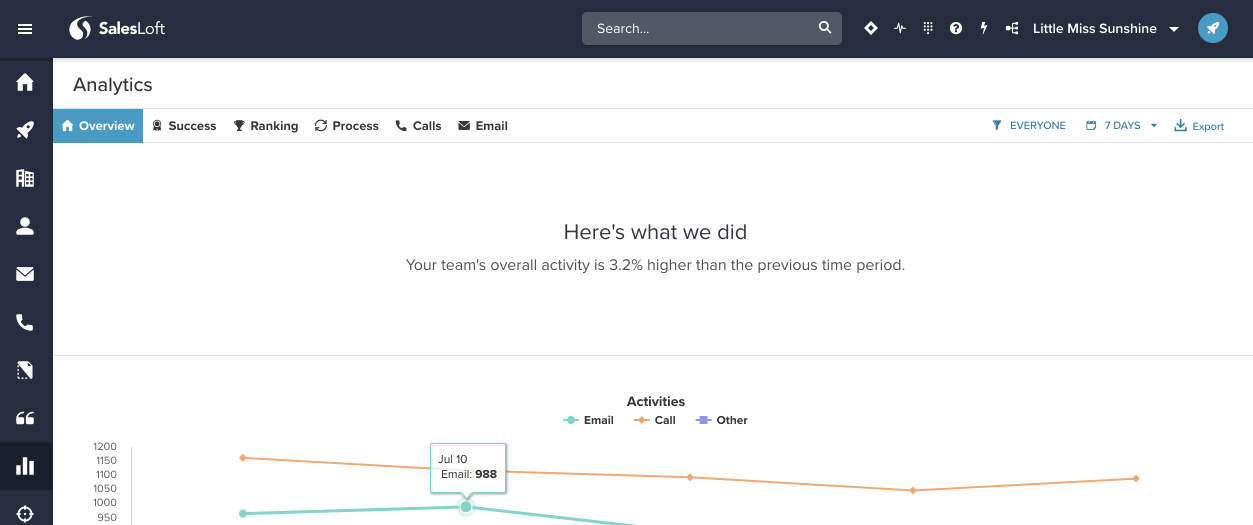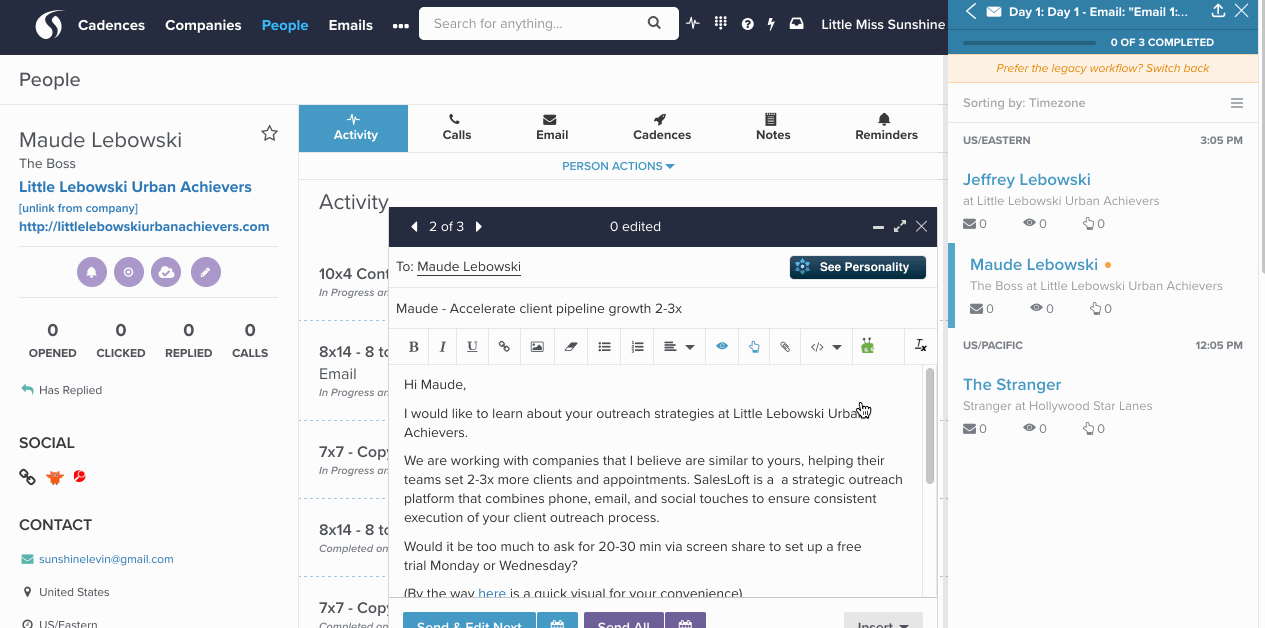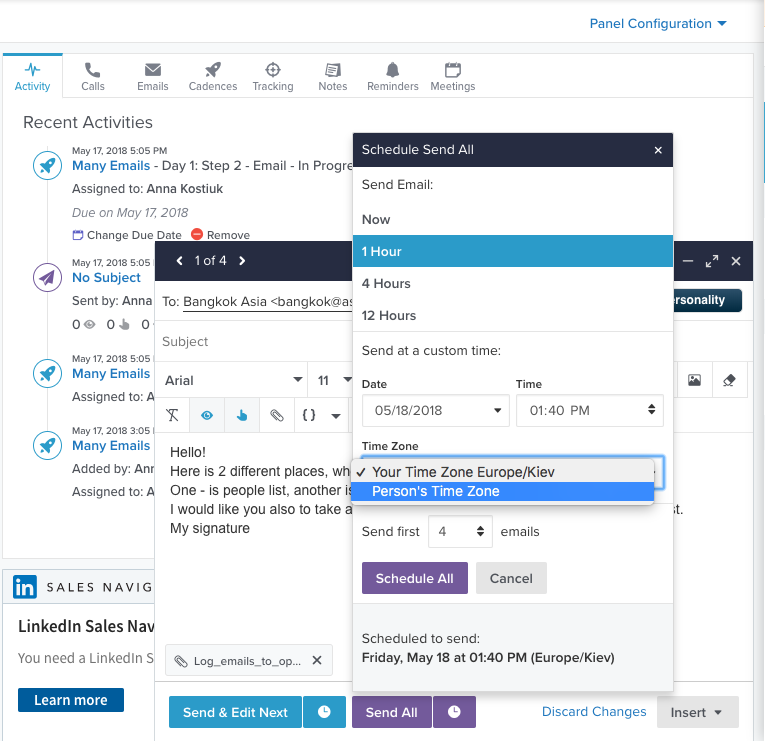Spam accounts for over half of all emails sent worldwide. With all that noise, what can you do to stand apart and make sure your message is delivered? The answer is simple: email deliverability.
By managing your email deliverability, you can maximize the likelihood of your message reaching its destination. Factors that contribute to email deliverability include:
- Domain reputation
- Content & composition of emails
- Sending behavior
- How recipients engage with emails
While you may not be able to control how someone interacts with your message, by establishing the best practices outlined in this post, you will build a foundation for email success.
Protect Your Reputation
Your domain is everything that comes after the @ sign in your email address. The reputation of your domain is the result of your email sending practices:
- Who you are sending to
- Your email open/click rates
- Bounce history
- Domain status
Like your credit score, a domain reputation is easy to drag down and hard to restore, so it’s important to be proactive to maintain a strong reputation.
Know your contacts
It can be tempting to choose quantity over quality when it comes to email and prospecting, but much like archery, you need to aim before you shoot.
PRO TIP: If you are reaching out to more than one person at a company at the same time, we recommend further personalizing messages on a one-to-one basis and being aware of repetition. Remember, their desks might be side by side!
Check your email open/click rates
Your domain reputation can be directly affected by your open and click rates which Inbox Providers use to determine how interested their user is in your message. Your open rate is a measure of how many of the people you sent to actually view the message, your click rate (or click-through rate) is the ratio of recipients who clicked on a link in your message compared to the open rate. While both are important, good click rates are most impactful to your reputation.
PRO TIP: Use links as opposed to attachments to improve click rates and request that your customers add your email address to their address book.
Pay attention to bounce rates
A Salesloft user with a high bounce rate should review who they have sent to and what they have been sending. A Salesloft user with low bounce rates may have methods that could benefit the rest of the team.
PRO TIP: Managers can see individual’s bounce rates in the new Team Performance report.
Keep your domain to yourself
Are you using the same domain as your marketing team? Marketing often sends thousands of messages in a single day. As such, they generally see lower email deliverability than the one-to-one communications sent by sales. You don’t want their sending volume hurting your domain reputation.
PRO TIP: Ask your marketing department what domain they use. If it’s the domain you would use, ask about their email deliverability. If it’s poor, you may wish to partner with them to improve the score overall or request that marketing establish a unique domain.
Check your domain status
Your domain should have a DMARC (Domain-based Message Authentication, Reporting & Conformance) record, a DKIM (DomainKeys Identified Mail) record, and a published SPF (Sender Policy Framework) prior to sending an email. Having these in place can greatly reduce the risk of your emails being flagged as spam.
PRO TIP: Salesloft displays the domain status for DMARC, DKIM, and SPF within Salesloft as a deliverability checklist. If you find that these records are not in place, partner with your IT department to implement any missed items on the checklist.
Build Better Emails
How do you build a message recipients want to open and engage with while not looking like spam?
Write better subject lines
Your subject lines should be personal and professional. Ask yourself, ‘Would I open this email?’ If the answer is no, find a better way to say whatever it is you are trying to convey.
- Communicate on a one-to-one basis when emailing multiple contacts within the same company.
- Avoid special characters, yes this includes exclamation points.
- Avoid ‘trigger’ words and phrases, such as: amazing, click here, dear friend, for only ($), free or toll-free, great offer, guarantee, increase sales, order now, promise you, risk free, special promotion, this is not spam.
Personalize your message
Our research indicates that including personalization in email communications fosters a one-to-one experience. The sweet spot is 20% of the message should be personalized – read the research to learn more.
- Use dynamic tags to greet your contact by name.
- Interject snippets to tailor messages further.
- Send messages on a one-to-one basis, customized to the best of your ability based on insight into the individual, their pain points, their companies challenges/opportunities, etc.
PRO TIP: Use Crystal to understand a contact’s personality better and gain insights into how best to engage with a specific customer.

Build a connection
As sellers, it’s easy to assume that everyone is a potential contact, but it’s critical to remember that most prospects never ‘opted in’ to receive your messages. This isn’t marketing; it’s sales! It can be tempting to dive into a relationship with a prospect right away but Rome was not built in a day, and you should take special care when crafting first touches.
- Introduce yourself and the purpose of your message.
- Include your business address and/or phone number.
- Request customers to add your email address to their address book.
- Avoid attachments, include links to important documents instead.
- Include an easy way to express interest or disinterest, and respect the response.
Pay attention to disinterest, if someone is not engaging with you after a few steps move them into a new cadence that connects more over the phone or less often. Contact restrictions easily allow you to track the preferred method of communication for your contracts.
Send at the right time
It’s easy to manage tasks and set schedules in Salesloft, but you should also consider the time of year. For example, sending an email on Black Friday might cause email deliverability issues or push your message to the bottom of the inbox. That doesn’t mean you shouldn’t send on such days, but timing becomes that much more important.
PRO TIP: When sending during a holiday typically associated with big, online sales, time your messages to be delivered when you expect your customer to be in the office, usually mid-day to ensure the message isn’t buried in their inbox.
Questions you should consider when deciding when to run email steps are:
- When will your contact be in the office?
- What is your contact’s time zone?
- Is it near the end of a quarter or fiscal year?
- Does the company have a large event coming up?
- Is the person brand new to their role – is this the right time to be reaching out to them, or after a while of settling in?
PRO TIP: When in doubt, schedule messages against your customer’s time zone.

Salesloft is here to help! Below we have highlighted 3 features that help manage timing:
- Analytics tab offers insights into when steps should be most effective.
- Cadence Priority orders tasks based on an established precedence.
- Out of Office Detection identifies when an email contact responds with an OOO and shares that information with you so you can plan accordingly.
Want more?
Salesloft works hard to empower sellers and sales leaders to confidently manage email deliverability and rise above the noise. Check out these other email deliverability tips and tricks to grow your expertise and become an Email Champion!
[ctt template=”3″ link=”u1d8Q” via=”yes” nofollow=”yes”]When it comes to sales, email is the name of the game. How can you manage your deliverability to maximize the likelihood of your message reaching its destination? Check out our product blog. [/ctt]


